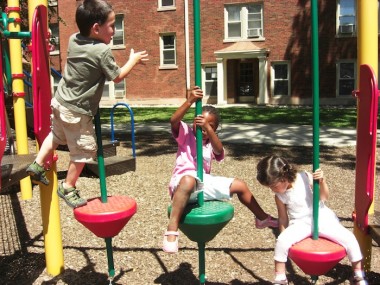 Parents often hear the word fracture for the first time and think it is less severe than a broken bone. Fractures, however, are broken bones. The severity of a break depends on the force that caused the fracture, where the fracture is located, and if the break is complex or simple.
Parents often hear the word fracture for the first time and think it is less severe than a broken bone. Fractures, however, are broken bones. The severity of a break depends on the force that caused the fracture, where the fracture is located, and if the break is complex or simple.
If a bone breaks and fragments of it stick out through the skin, this is called an open fracture. These are particularly serious because the skin is broken and the child is at risk for infection.
Bones are composed of a soft spongy center called marrow. The outer portion of the bone is harder and it contains the minerals calcium and phosphorus. The bones of the body make up the human skeleton and this protects the softer body parts and allows us to stand up and bear weight. Bones are really rigid but they can bend or ‘give’ when outside force is applied to them. Certain bones, like the ones of the hand, wrist, and arm, can absorb shock more than other bones. If a force is too great a bone will break.
OSS surgeons can stabilize and cast pediatric fractures at our offices.
Elbow Fractures
Children fall all the time and most of these incidences do not result in serious injury. However, if a child falls on an outstretched arm, a fracture could occur to one of the bones around the elbow. There are several areas where the fracture could occur with an elbow break. It could be above the elbow (supracondylar), it could be at the elbow knob (condylar), it could be at the inside of the elbow tip (epicondylar), or it could be at the growth plate (Physis). An elbow dislocation can even break off the head of the forearm bone (the radius).
Treatment will all depend on the type of fracture the child sustains, the degree of displacement (how far apart the bone ends are), and the severity of the injury. If the fracture forced the bones out of alignment, the orthopedic specialist will have to manipulate them back into place. Oftentimes surgery is needed and the surgeon uses pins, screws, or wires to hold the bone pieces in place.
Ankle Fractures
A broken ankle is a common childhood injury. These injuries result in a break in one or more of the bones that make up the ankle: the fibula, the tibia, and the talus. These fractures typically involve the growth plate, an area of developing cartilage tissue that regulates bone growth and helps to determine the shape and length of the bone. Pediatric ankle fractures occur during sports and vigorous play when the child’s lower leg or foot twists unexpectedly.
Treatment will depend on the location of the break, the degree of damage to the growth plate, the position of the foot at the time of injury, and the direction of the force at the time of fracture. Some of these fractures can be put back together by a procedure called closed reduction. After this, the doctor puts on a cast so the bones can heal. If this procedure is unsuccessful, or if the fracture is too severe, the doctor will have to perform an open reduction where the soft tissue is removed and the bones are realigned and held in place with pins and screws.
Knee Fractures
A break in the upper part of the shinbone (the tibia) can result from a low-energy injury, like a fall from a tree or from a high-energy injury, such as a four-wheeler accident. These are called fractures of the proximal tibia and there is often soft tissue injury accompanying the break. Nerves and blood vessels going through the knee are end-to-end with the bony structures and are often injured along with muscle, tendons, and ligaments.
When the orthopedic specialist considers treatment, he will take into account the child’s age, his or her lifestyle and activity level, the degree and severity of the injury, and the child’s medical condition. Oftentimes, knee fractures require emergency surgery where vertical incisions are made to release the skin and muscle covering the broken bone. This procedure is called a fasciotomy and these incisions must be left open for several weeks so the soft tissue can recover and the swelling can go down. The surgeon may have to use rods and plates to repair a knee fracture, also.
Find OSS on Facebook and follow on Twitter to keep up to date on new articles and news.
